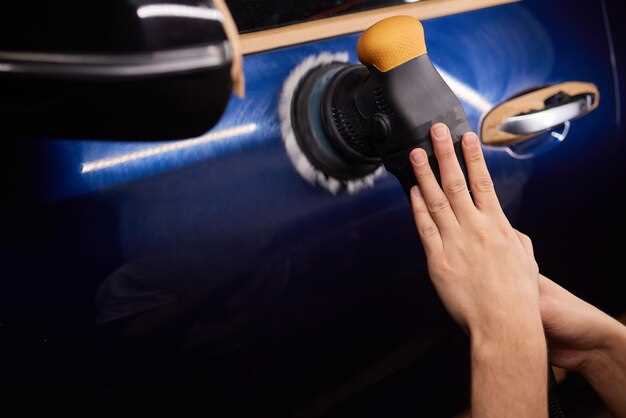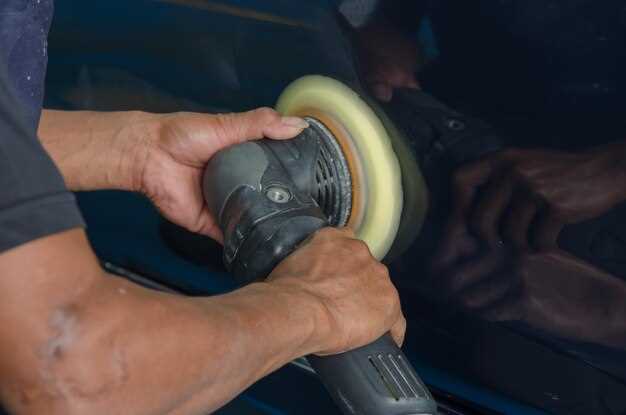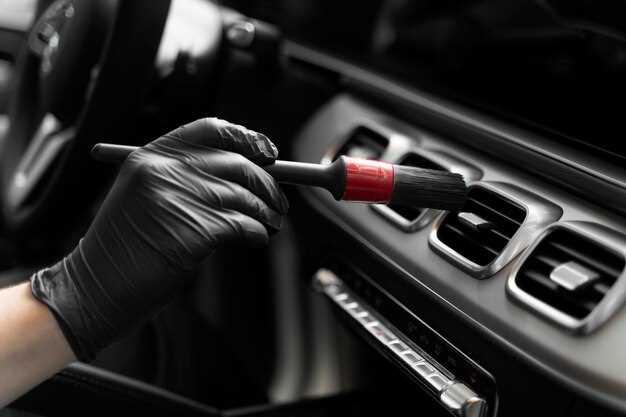
Achieving a showroom-quality finish on your vehicle requires more than just a regular wash; it demands a dedicated approach to buffing and polishing. This guide will navigate you through the essential steps involved in transforming your car’s exterior, restoring its lustrous shine while also protecting the paintwork from environmental factors.
Understanding the difference between polishing and buffing is crucial. While both processes are aimed at enhancing your car’s appearance, they serve different purposes. Polishing involves using abrasive compounds to remove surface imperfections, while buffing focuses on applying shine and removing any potential haze left after polishing. Mastering these techniques can elevate your car care routine to a professional level.
In this guide, we will cover the necessary tools, products, and techniques to effectively buff and polish your car. Proper preparation and application will ensure a brilliant finish and help maintain the vehicle’s aesthetic appeal for years to come. Get ready to dive into the world of automotive detailing and discover the best practices for achieving a radiant shine.
Choosing the Right Products for Car Buffing

Selecting the appropriate products for buffing your car is crucial for achieving a high-quality finish. Start with a good quality car polish or compound that suits your vehicle’s paint type. There are two primary categories: abrasive compounds for heavy correction and non-abrasive polishes for lighter imperfections. Assess the condition of your car’s paint to determine which product will be most effective.
Next, consider the type of buffing pad you will use. Foam pads come in various densities; soft pads are ideal for fine polishing, while more aggressive pads are better for deeper scratches and defects. Choose a pad that complements your selected product to maximize results. Additionally, rotary and dual-action polishers have different applications–rotary tools are powerful but require experience to avoid damage, while dual-action polishers are safer for beginners.
Another factor to keep in mind is the use of lubricants. Some buffing compounds require a specific lubricant to prevent heat build-up and ensure a smooth application. Always follow the manufacturer’s recommendations for the best performance and results.
Lastly, don’t overlook the importance of microfiber towels for wiping off excess product after buffing. Opt for high-quality, plush towels that will not scratch the paint and will effectively remove residues. Choosing the right products can make a significant difference in achieving that desirable shine and protecting your car’s finish for years to come.
Step-by-Step Process for Achieving a High-Gloss Finish
To begin the buffing process, ensure that your car is clean and dry. Wash the vehicle thoroughly to remove dirt and contaminants, followed by drying with a microfiber towel. This foundational step prevents scratches during buffing.
Next, inspect the paint for any imperfections such as scratches or swirl marks. Use a paint correction compound to address these issues before applying any polish. This will create a smoother surface, which is essential for achieving a high-gloss finish.
Now, select the appropriate buffing pad and polish. For a high-gloss finish, a soft pad combined with a finishing polish is ideal. Apply a small amount of polish onto the pad and spread it evenly across a section of the car’s surface. This will help to avoid any thick application that could lead to uneven buffing.
Set your buffer to a low speed to start. Working in a small section at a time, move the buffer in overlapping passes. This technique ensures that every area gets evenly treated, promoting a consistent shine across the car.
After buffing each section, use a clean microfiber cloth to wipe away any residue left from the polish. This step reveals the true gloss level and helps you assess the overall finish achieved so far.
Once you have buffed the entire car, you may notice areas that require additional attention. If needed, repeat the buffing process on these spots to enhance the gloss. Finally, apply a high-quality wax or sealant to protect the newly polished surface and maintain that brilliant shine.
Common Mistakes to Avoid When Polishing Your Car

When polishing your car, it’s essential to avoid several common mistakes that can lead to unsatisfactory results or even damage your vehicle’s paint. Understanding these pitfalls will help you achieve a flawless shine.
One frequent mistake is neglecting proper surface preparation. Before starting the polishing process, ensure that the car is thoroughly washed and dried. Any dirt or debris left on the surface can cause scratches and diminish the effectiveness of the polishing compound.
Another common error is using the wrong type of polish or pad. Each vehicle’s paint has specific needs, and selecting an unsuitable product can result in poor outcomes. Always choose a polish that matches your car’s paint type and consider the level of correction required.
Many people also make the mistake of applying too much pressure during polishing. Excessive pressure can cause the polishing pad to break down quickly and may even lead to burning the paint. Utilize a gentle touch to allow the polish to do its job effectively.
Timing is also crucial; people often leave the polish on the surface for too long. Follow the manufacturer’s instructions regarding application time. Leaving it too long can result in hard-to-remove residue.
Additionally, failing to regularly clean the polishing pad is a critical mistake. Using a dirty pad can transfer contaminants back onto the car’s surface, negating the polishing effort. Make sure to clean the pad frequently during the process.
It’s essential not to rush the process. Depending on the extent of imperfections, polishing can require patience and multiple passes. Rushing may lead to missed spots or uneven shine, ultimately defeating your purpose.
Finally, neglecting to protect the newly polished surface is a common oversight. After polishing, apply a quality wax or sealant to maintain the shine and offer protection against environmental factors.




